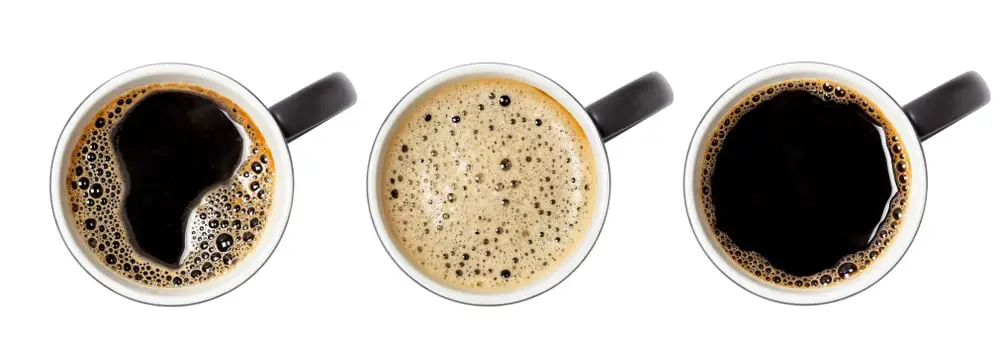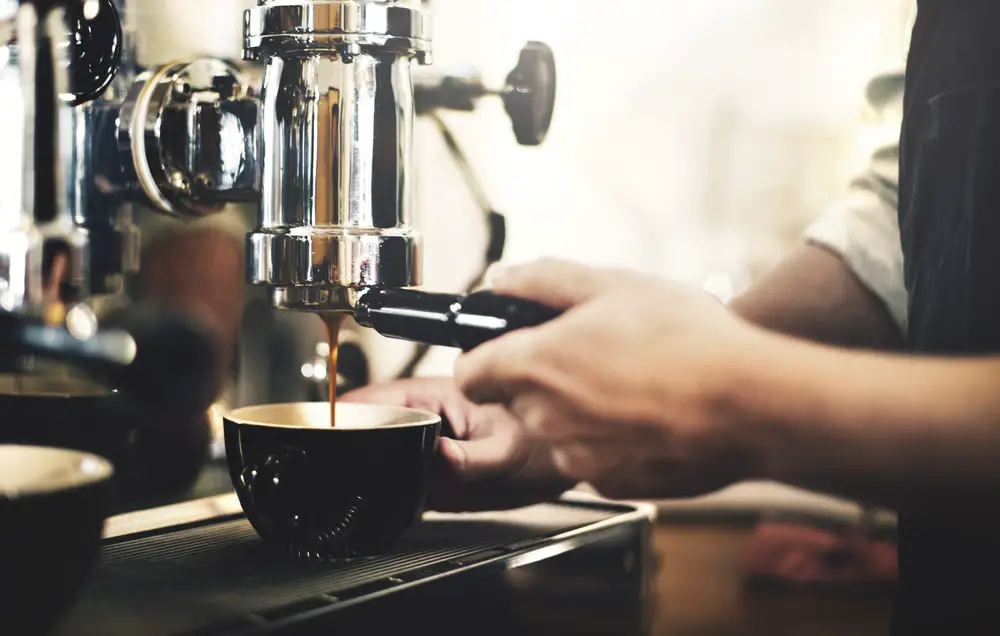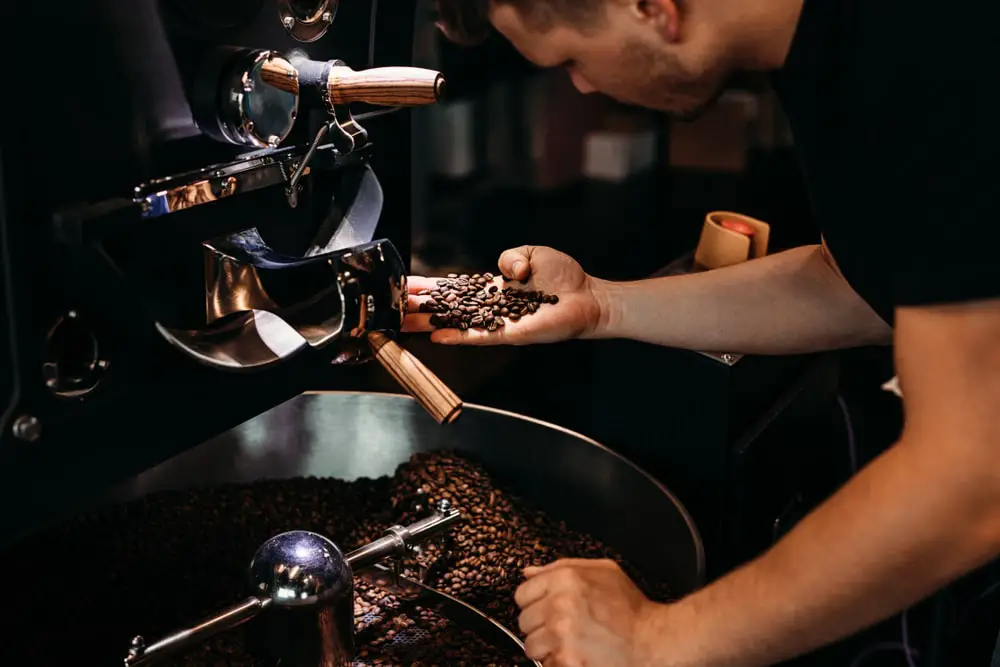Waking up every morning and making yourself a delicious cup of coffee seems to become a habit for coffee lovers. It helps you to be more alert, and mentally refreshed to be ready for a new day. However, what if you lifted the coffee cup to your lips and realized it was covered with a layer of oil. Does that mean your beans are spoiled or not?
Do not worry. The good news is that having oil on top of coffee is quite normal and shouldn’t pose too much of a problem for the quality of your coffee. In this article, let’s find out why oil stays on your coffee cup and what you should do if you don’t want to see this situation.
A Brief Overview Of Oil Film On Coffee
The layer of oil that settles on the surface of your coffee is technically called coffee scum. Despite its unpleasant nickname, it is neither dirty nor revolting. The coffee scum on the surface of your coffee is merely the natural coffee oils that develop after brewing from fresh coffee beans.

Caffeine and other chemical components in coffee that function as antioxidants, as well as roughly 71 percent unsaturated fats, are commonly found in these oils.
What Causes The Oil On The Top Of Your Coffee?
Many factors induce the oil to rise and form coffee scum, a thin coating that forms on top of the drink. Brewing technique, water temperature (and occasionally water hardness), roasting process, coffee bean quality, and filter type are only a few of the primary reasons that will be investigated further down.
Coffee-maker’s Methods
The quantity of coffee scum you see is influenced by the manner you brew your coffee. Beer manufacturing is a comparable example. It utilizes a filter to make beer via the dripping process so it is less prone to build a film.
By contrast, many French and Turkish coffee techniques do not employ filters and are brewed at extremely high temperatures, they are more likely to create sticky, oily coffee.
However, when employing the cold brew method, the presence of oil scum is minimal.
Temperature Of The Water

The temperature of the water used to make coffee has a significant impact on the coffee’s quality and the formation of oil scum. You may notice more coffee scum if you prepare your coffee with really hot water (for example, boiling water in a kettle for the pouring technique). This is because the molecules in a coffee bond more efficiently at higher temperatures, this is the case. However, oil is insoluble (and only partly hydrophilic) and hence does not “mix” with other molecules. Instead, it floats to the top of the water and creates scum.
LetHardness Of Water
The sort of water you use to prepare your coffee is the next consideration. You may notice more film on your coffee mugs if you reside in an area with hard water. This is attributable to the fact that hard water contains more minerals than soft water. Calcium binds to the fatty acids released by coffee beans, causing the oil to rise to the surface.
To be honest, it doesn’t make the coffee scum any worse; it only makes it more visible.
Type Of Roast
Coffee has distinct properties and flavors depending on how it is roasted. Similarly, different methods of roasting result in varying levels of oil in the coffee. As fire-roasted coffee beans have higher unsaturated lipids, you could notice more coffee scum when brewing with them.

Oil is present in both dark and light roasts. Heavy roasting, on the other hand, causes these oils to adhere to the surface of the beans, resulting in greater film.
Quality Of The Coffee Bean
Because of changes in manufacturing and culture, higher-quality coffee beans often have less oil. Coffee scum, on the other hand, isn’t always indicative of a poor cup of coffee.
Slow roasting produces less oil in high-quality beans. You’ll notice less coffee scum in your cup if you use beans that have been roasted by this method.
Filter
To avoid oil spatter on your coffee, it’s better to utilize the filter technique. Coffee filters, on the other hand, aren’t all made equal. If you’re experiencing difficulty with coffee scum, try replacing the filter.
Filters that include activated carbon are generally the most effective. This binds to organic contaminants in coffee and keeps them out of your cup. Fats found in coffee beans, for example, are extremely good in reducing coffee scum.
This is why brewers who don’t use a filter are more likely to have an oily film on the top of their cups.
What’s The Best Way To Avoid Having A Film On Top Of Your Coffee?
Although coffee scum has little effect on the flavor of your coffee, it does detract from its appearance and makes you feel uneasy while drinking it. Let’s find out how to deal with it.
1. Make Use Of Fresh Beans
Coffee scum is generally the result of old coffee beans. Since of the oil is produced during roasting, dark, glossy beans are normal, but if you find shiny roasted beans, you should definitely clarify because they may be old.
It’s advisable to smell the beans before purchasing them and keep in mind that fresh-smelling beans make for a delicious cup of coffee.
2. Improve Filtration And Water Softening
While you could buy distilled water for the rest of your life, it can get pricey with time. Investing in a decent water softener will help minimize the amount of calcium in your coffee, as well as make your coffee machines work more efficiently.
The inclusion of a filter aids in the removal of extra contaminants from the water, decreasing residue and increasing the flavor of your coffee.
3. Thoroughly Clean Everything
It’s just as vital to carefully wash the beans before roasting as it is to use the nicest beans and the clearest water.
You might be startled to hear that the scum on your coffee isn’t actually from your deliciously roasted beans, but rather a residue from dish detergent that you didn’t rinse sufficiently.
And, while it may sound harsh, soaking your coffee in hot water and vinegar, then air drying it is an excellent method to keep your cups and coffee equipment residue-free.
4. Change The Temperature And Roasting Process If Necessary.
These two components also play an important role in preventing coffee scum. Lessen the roasting temperature to reduce the quantity of oil in the coffee. As previously said, cold brew is a method of brewing coffee that you should consider if you wish to consume coffee with less oil.
Final Thought
Isn’t it true that you now know the solution to the query regarding the oil scum on the coffee cup? When you see them, don’t be very concerned. That’s not always a bad thing, because the oils in ground coffee beans hold a lot of the taste. Every problem has a solution, so relax and enjoy your coffee till we meet again.